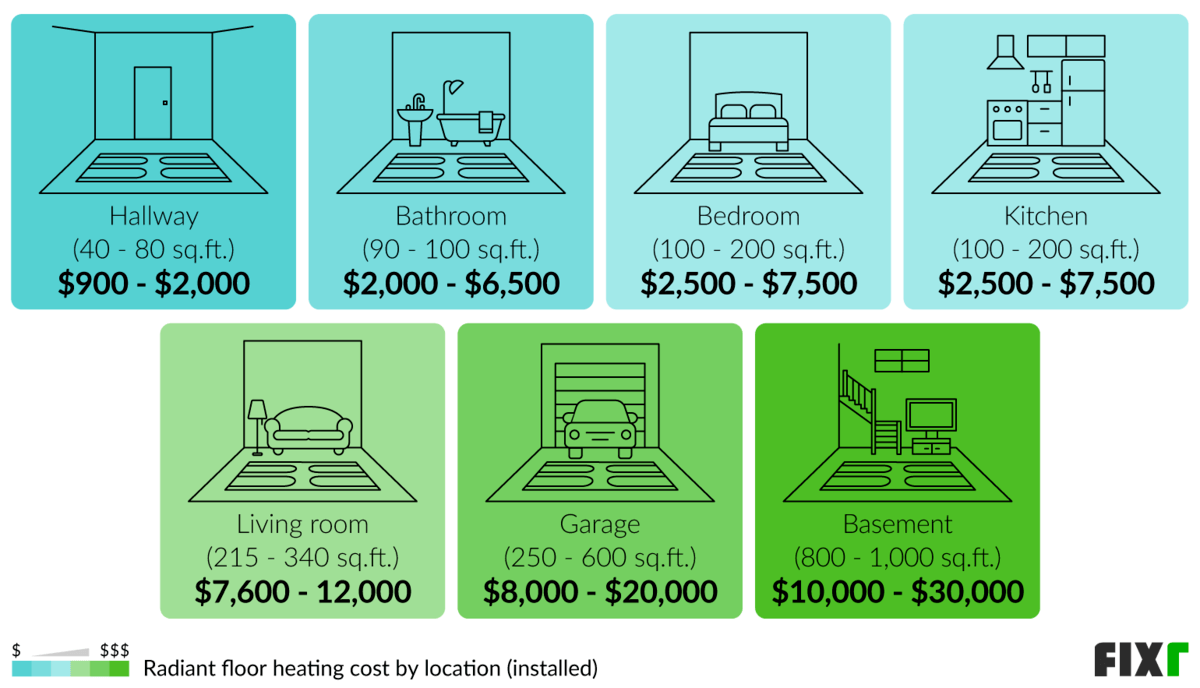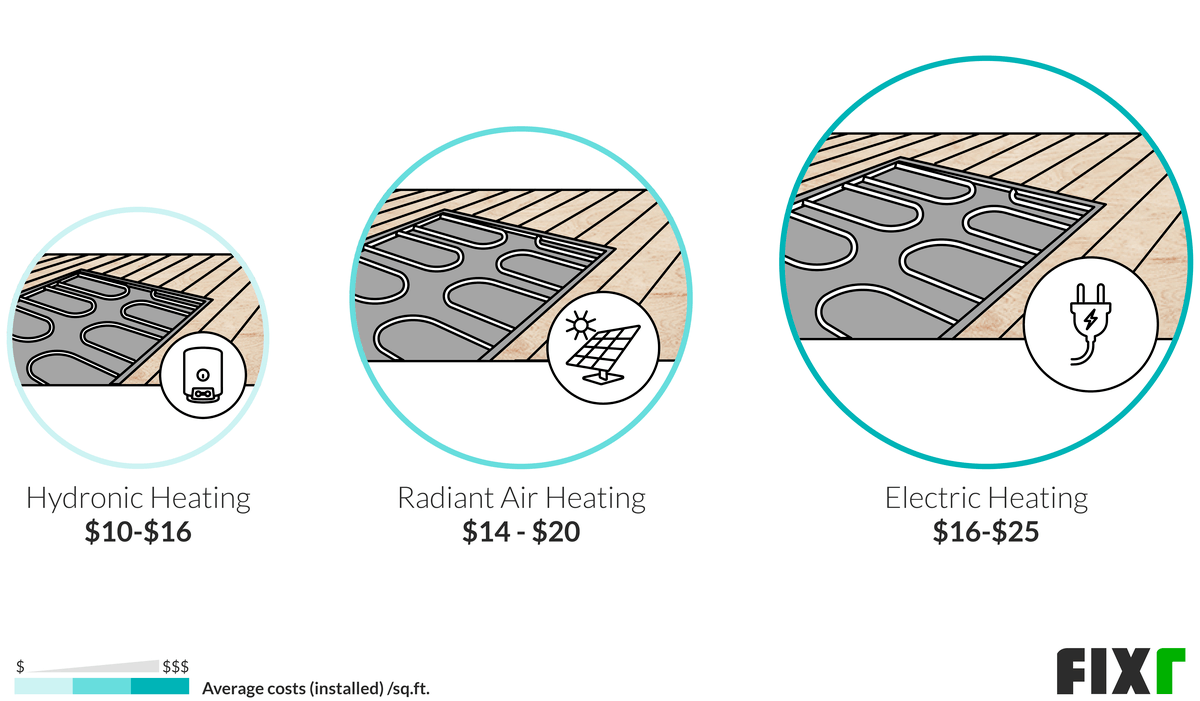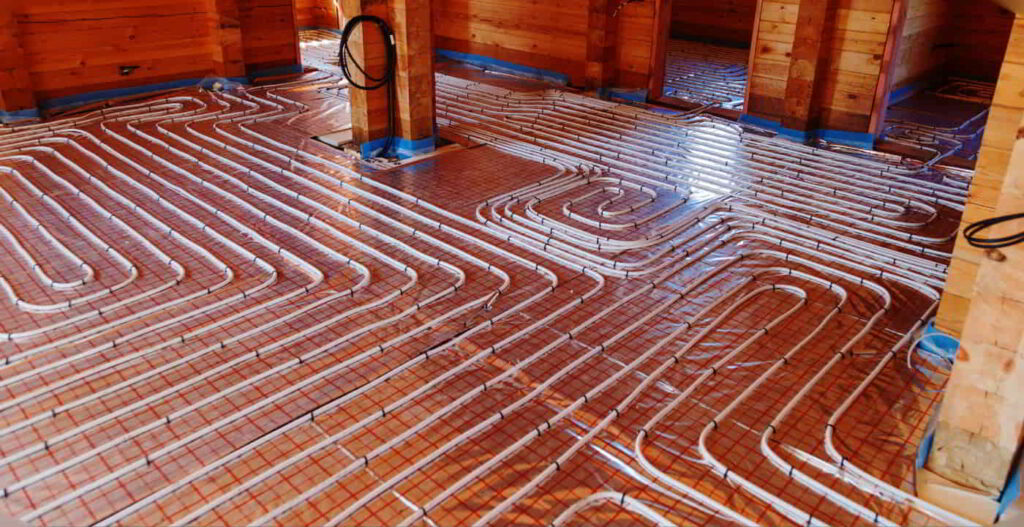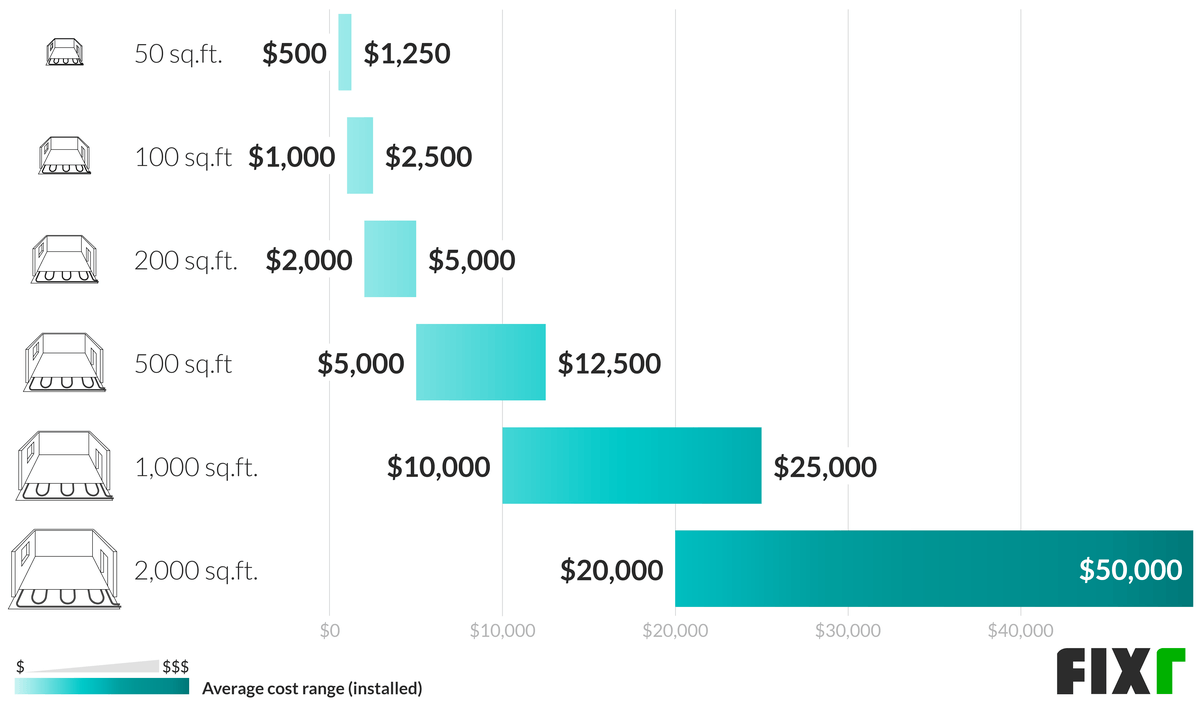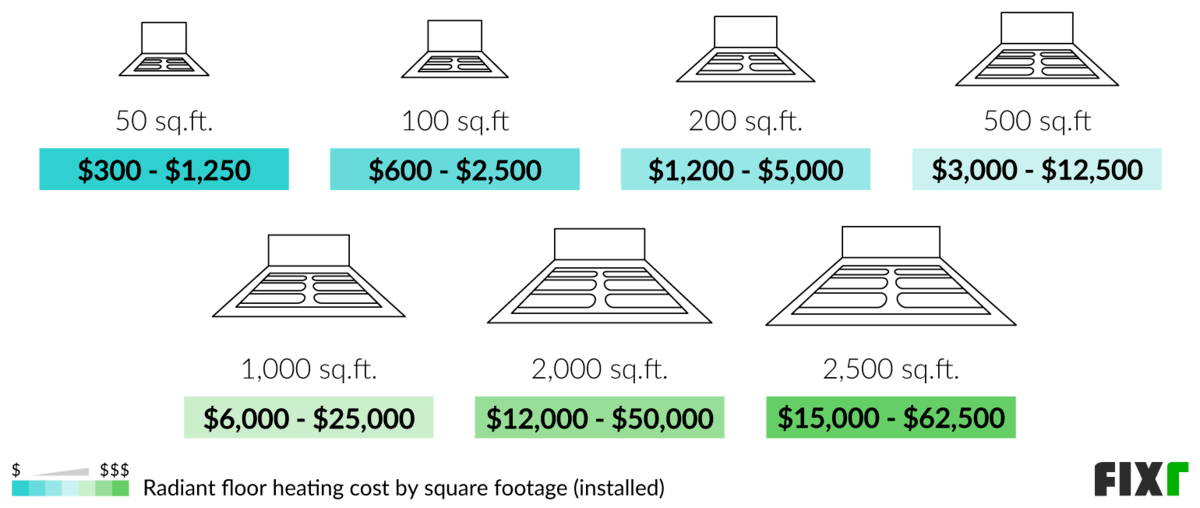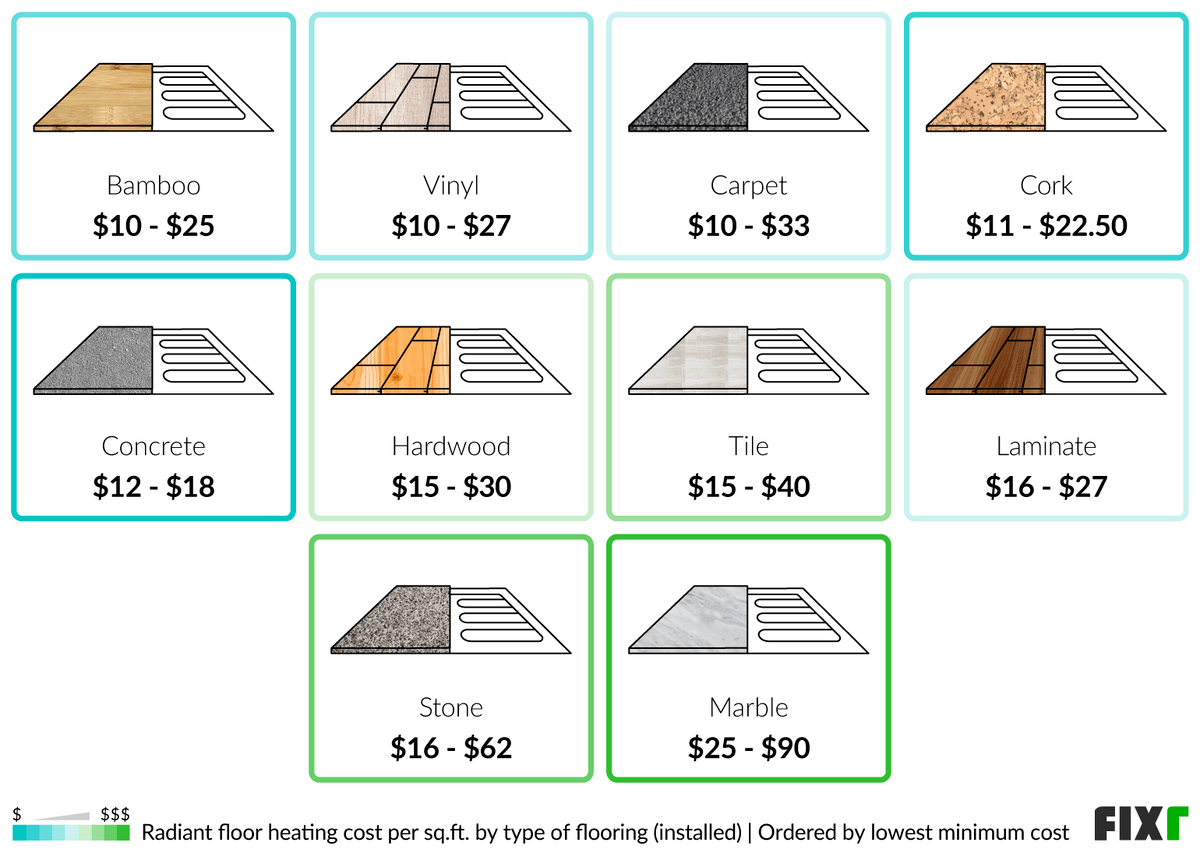Radiant Floor Heating Cost Per Square Foot

Radiant floor heating, an increasingly popular method for warming homes and commercial spaces, offers consistent temperatures, quiet operation, and energy efficiency. One of the first questions people ask when considering this technology is, "What's the radiant floor heating cost per square foot?" This article breaks down the costs associated with radiant floor heating, exploring different installation methods, materials, and long-term operational expenses.
Understanding Radiant Floor Heating Systems
Before diving into costs, let's clarify what radiant floor heating entails. Unlike forced-air systems that blow heated air through ducts, radiant floor heating warms a surface – typically the floor – which then radiates heat upwards, warming the entire room. This method reduces drafts and ensures a more even temperature distribution.
There are two primary types of radiant floor heating systems:
- Hydronic systems: These systems circulate heated water through tubing embedded in the floor. A boiler or water heater warms the water, which is then pumped through the tubing.
- Electric systems: These systems use electric heating cables or mats installed under the floor. When electricity passes through the cables, they heat up, warming the floor above.
Radiant Floor Heating Cost Per Square Foot: A Breakdown
The cost of installing radiant floor heating varies significantly based on several factors. Here’s a detailed breakdown:
Materials Costs
The price of materials is a major contributor to the overall cost. Here's what to expect:
- Hydronic tubing: Expect to pay between $2 and $6 per square foot for PEX (cross-linked polyethylene) tubing, the most common type used in hydronic systems. High-quality PEX-A tubing often carries a higher price tag but offers greater flexibility and durability.
- Electric heating mats or cables: These typically range from $8 to $15 per square foot, depending on the brand, wattage, and coverage area.
- Insulation: Proper insulation beneath the heating system is crucial for preventing heat loss into the subfloor. Insulation materials like rigid foam boards can cost between $1 and $3 per square foot.
- Manifold (for hydronic systems): The manifold distributes heated water to different zones of the floor. Manifolds can range from $300 to $1,500, depending on the number of zones.
- Boiler or water heater (for hydronic systems): A new high-efficiency boiler can cost between $3,000 and $10,000, including installation. Tankless water heaters are also an option but might require upgrading your gas line.
- Thermostat: Smart thermostats are essential for controlling the temperature and optimizing energy usage. Expect to pay between $100 and $300 per thermostat.
Labor Costs
Labor costs can vary widely depending on the complexity of the installation and the local labor market. Generally, labor can account for 40% to 60% of the total project cost.
- Hydronic system installation: Installing a hydronic system requires a skilled plumber or HVAC technician. Labor costs can range from $4 to $10 per square foot. This includes laying the tubing, connecting the manifold, and integrating the system with the boiler.
- Electric system installation: Installing an electric system is generally simpler than a hydronic system, but it still requires a qualified electrician. Labor costs can range from $3 to $7 per square foot. This includes laying the mats or cables, connecting the thermostat, and ensuring proper electrical connections.
Other Cost Factors
Beyond materials and labor, other factors can influence the total cost:
- Floor preparation: If the existing floor needs leveling, repair, or reinforcement, this can add to the overall cost. Concrete slab preparation can be particularly expensive.
- Floor covering: Some floor coverings are more suitable for radiant floor heating than others. Tile and stone are excellent conductors of heat, while carpet can impede heat transfer. The choice of floor covering can affect the system's efficiency and may require adjustments to the system design.
- Permits and inspections: Depending on your location, you may need permits for plumbing or electrical work, which can add to the overall cost.
- System design: A professionally designed system will optimize efficiency and performance. Hiring an experienced HVAC engineer or designer can add to the upfront cost but can save money in the long run through reduced energy consumption.
Radiant Floor Heating Cost Per Square Foot: A Summary
Based on the factors outlined above, here's a general estimate of the radiant floor heating cost per square foot:
- Hydronic systems: $8 to $16 per square foot (including materials and labor)
- Electric systems: $11 to $22 per square foot (including materials and labor)
These are just estimates, and the actual cost can vary depending on the specifics of your project. Obtaining multiple quotes from qualified contractors is crucial to get an accurate estimate.
Long-Term Operational Costs
While the initial installation cost may be higher than other heating systems, radiant floor heating can offer significant savings in the long run. The operational costs depend on factors such as energy prices, insulation levels, and thermostat settings.
- Energy efficiency: Radiant floor heating can be more energy-efficient than forced-air systems because it heats the floor directly, eliminating duct losses. Studies have shown that radiant floor heating can save 15% to 40% on energy bills compared to conventional heating systems.
- Zone control: Radiant floor heating allows for precise temperature control in different zones of the house, allowing you to heat only the rooms you're using and saving energy.
- Maintenance: Radiant floor heating systems require minimal maintenance. Hydronic systems may need occasional flushing and pressure checks, while electric systems are generally maintenance-free.
To accurately assess the long-term cost savings, consider the energy efficiency of the system, the local energy prices, and your heating needs.
DIY vs. Professional Installation
While it's possible to install radiant floor heating yourself, especially electric systems in small areas, professional installation is generally recommended. A professional can ensure proper system design, installation, and integration with your existing HVAC system.
- DIY: Installing electric mats in a small bathroom might be a manageable DIY project. However, installing a hydronic system or a large electric system requires specialized knowledge and tools.
- Professional Installation: Hiring a qualified contractor ensures that the system is installed correctly, meets building codes, and operates efficiently. A professional can also provide warranty coverage and ongoing support.
Choosing the Right System
The best type of radiant floor heating system for your home depends on several factors:
- New construction vs. retrofit: Hydronic systems are typically easier to install in new construction, while electric systems are often a better choice for retrofit projects.
- Floor type: Some floor coverings are more suitable for radiant floor heating than others. Tile and stone are excellent choices, while carpet can impede heat transfer.
- Energy source: If you have access to natural gas, a hydronic system with a high-efficiency boiler might be the most cost-effective option. If you rely on electricity, an electric system might be more convenient.
- Budget: Consider your budget and the long-term operational costs when choosing a system. While hydronic systems may have a higher upfront cost, they can offer significant savings in the long run.
Comparing Radiant Floor Heating to Other Heating Systems
Radiant floor heating offers several advantages over traditional heating systems:
- Even heat distribution: Radiant floor heating provides consistent temperatures throughout the room, eliminating cold spots and drafts.
- Quiet operation: Radiant floor heating systems are virtually silent, unlike noisy forced-air systems.
- Energy efficiency: Radiant floor heating can be more energy-efficient than forced-air systems, reducing energy bills and carbon emissions.
- Improved air quality: Radiant floor heating doesn't circulate dust and allergens like forced-air systems, improving indoor air quality.
However, radiant floor heating also has some disadvantages:
- Higher upfront cost: The initial installation cost of radiant floor heating can be higher than other heating systems.
- Slower response time: Radiant floor heating can take longer to heat up a room compared to forced-air systems.
- Floor covering limitations: Some floor coverings, such as thick carpets, can impede heat transfer.
Conclusion
Determining the radiant floor heating cost per square foot involves considering various factors, from materials and labor to floor preparation and system design. While the initial investment might be higher than conventional heating systems, the long-term benefits, including energy efficiency, comfort, and improved air quality, make it a worthwhile consideration for many homeowners and facility managers. By carefully evaluating your specific needs and budget, you can choose the right radiant floor heating system to create a comfortable and energy-efficient environment.

